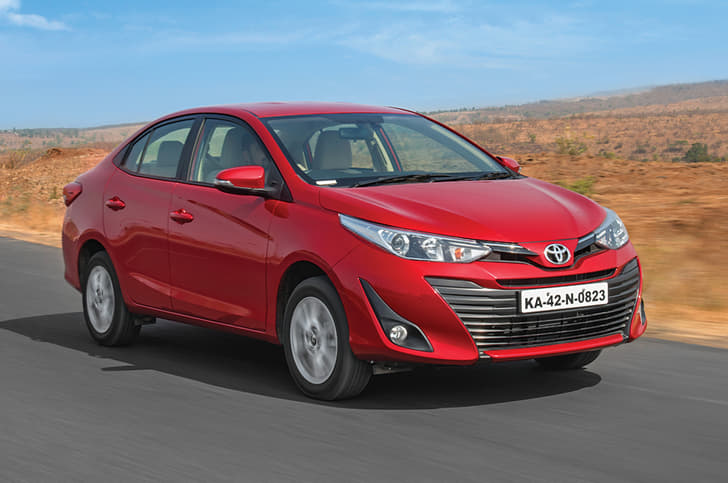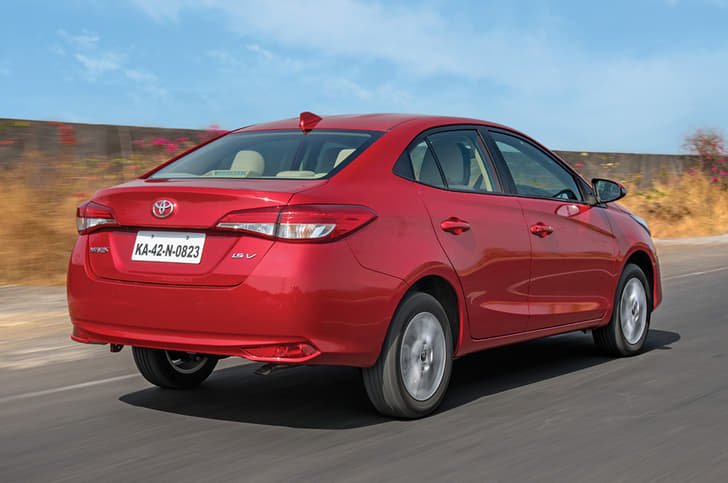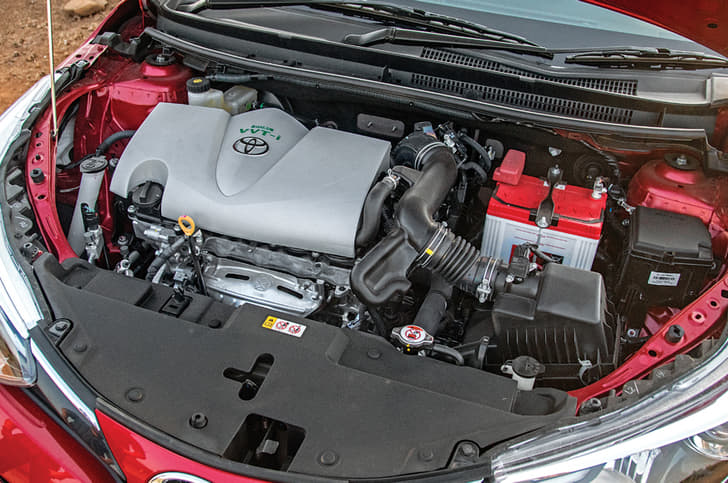Today is one of those days where I feel like I’ve come full circle. It’s just occurred to me I’ve been doing this job for almost a decade, and the car that reminded me of this is standing right in front of me. When you’re just a wee little boy who’s recently finished college and struck gold with his dream job of being a motoring journalist, things, understandably, start out quite slowly. It begins at the desk, where you toil away for months, until you earn yourself a chance to tag along with the big boys for a shoot. Eventually, if you’ve been good, you’ll get the chance to drive, but then too, it’s restricted to the small subset of cars that are small, inexpensive and yet somehow insignificant. But one day, maybe, if you’re lucky and the stars align, something big, fancy and cool will come along, and you’ll have that first big moment. For me, that was the previous Mitsubishi Outlander. I still remember it clearly – a mix of straight lines and circular motifs, and, in the case of our test car, a vibrant electric blue paint shade. It was the first ‘big’ car I got to drive, and for that reason, the memory will stick with me forever.
Ten years later
It’s 2018 and this new Outlander is the SUV that will spearhead something of a renaissance for Mitsubishi, which for a long time had only one model – the Pajero Sport – on sale in India. Yes, they reintroduced the Montero in late 2016, but that was merely a facelift of the existing model. This is car a generation up from the one sold here before, but how fresh is it, really? You see, this model was launched overseas in 2012, and this facelifted version was introduced in 2015. And now, three years later, it’s being introduced here as a rival to the Honda CR-V, which too will be launching in an all-new guise later this year.
But even though this version of the Outlander is already three years into its life cycle, it bears Mitsubishi’s striking new family face. It’s made up of slim, part-LED headlamps (with an L-shaped running lamp signature) that flank two thick bars of chrome that make up the signature grille. And below the lamps, two more bars of – yup, you guessed it – chrome, extend to the base of the bumper in a reverse-C-shape, framing the lower air dam. The proliferation of the shiny stuff is sure to go down well with Indian buyers.

And there’s more! A sliver of black cladding runs around the base of the car, accented by brushed silver trim at the front, rear and sides. The backward-kinked D-pillar, bulging round wheel arches and LED-speckled tail-lamps of the previous car haven’t been brought forward for this generation, however, and Mitsubishi has played it quite safe with the profile and rear. Things are far more conventional here, with a thick shoulder line that ends with a set of LED tail-lamps that look a bit ordinary. What’s also gone is the cool split tailgate that made loading and unloading the boot much easier, but loading this car isn’t too much of a bother nonetheless. It does have a nice upright stance and hasn’t fallen prey to the overly swoopy ‘crossover’ aesthetic as many newer soft-roaders have. However, what really spoils the fun is Mitsubishi’s decision – no doubt in the pursuit of better comfort – to fit this SUV with 16-inch wheels, which look a bit puny inside those big wheel wells. An XUV500, for instance, has 18-inch wheels.
Cross walk
Which brings us to the question of what sort of SUV this is meant to be. Where a CR-V is and has always been a road-biased large family crossover, and the Pajero Sport is basically a rally truck with space for seven, the Outlander appears to be someplace in between. Yes, it has a monocoque chassis, a transverse engine layout and sophisticated independent suspension all round, like you’d find on most premium crossovers, but then it’s also got an upright shape and chunky tyres like an off-roader. And though it uses adaptive AWD rather than proper 4x4, because this is a Mitsubishi, going by past experience, it should be far more robust than what you get in most crossovers, and good enough for more mud-slinging than you might think.
And I’m happy to report that the multifaceted nature I remember from the old Outlander has returned in the new one. We start things off on a narrow but smooth patch of tarmac that’s snaking up the side of a mountain. The AWD system, via an almost comically large button on the transmission tunnel, is set to Auto, which means the rear wheels will spring to action only when they’re needed. I’m not being merciful with the throttle either, and realistically, this is not the way anyone would drive their crossover or SUV. But as I hammer from corner to corner, trying my best to catch this chassis out, I can’t. It responds to inputs so predictably and benignly, I’ve inadvertently cracked a smile. The steering has a nice weight to it, and though there is a small amount of slack, it feels far more connected than you’d expect in a crossover. It’s also very direct, which actually makes steering this car a lot of fun.
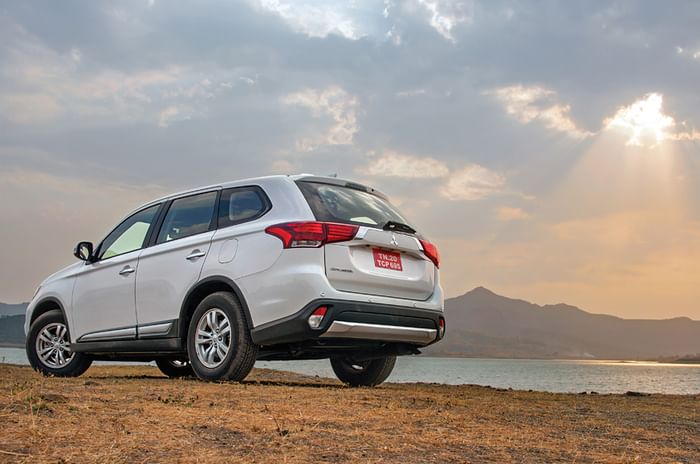
Likewise, there is some body roll, sure, but once again, it’s surprisingly subdued and you can easily forgive it once you work the car into a flowing rhythm going down the road. So it’s no sports sedan or hot hatchback, but for a crossover, gosh it’s good! Better than a Honda CR-V? Perhaps; it certainly comes close. This is also, no doubt, helped by that all-independent suspension that’s adjusting to corner camber and lateral forces like a pro, and the AWD filling in when required.
And off the tarmac? Luckily, in this section of rural Maharashtra, there’s plenty of varied terrain to be found just by driving off the road. Sure, the Auto mode is doing just fine on the loose dirt that I encounter first, but I see a rocky patch ahead, and I’m curious to see if any Pajero DNA has been mixed into this batch. I prod that large AWD button until the screen says ‘AWD Lock’, and immediately, there’s more deliberation in the power delivery, as it’s apportioned permanently to all four wheels. This is by no means a serious off-road course, just some light muck and a small ridge of blunt, mossy rocks by a lake, but the effortless sure-footedness with which the Outlander is just cruising over it is mighty impressive for a crossover. I’m loving those chunky tyres at this point.
Fundamentals right
I’m also loving them as I carelessly bound back up the mud track toward the main road again because they do wonders for the ride quality. This may be a monocoque SUV, but the way it takes bumps makes it feel properly tough, like a ladder-frame SUV. Yep, those puny wheels seem to have paid off in the end; the tall sidewalls are taking much of the hit from all those ruts left by the last tractor that went by. This applies even on a proper road, of course, and the 215/70 R16s (the same size as the old Outlander, incidentally) really clean up broken tarmac and expansion joints.
It all works well in conjunction with the suspension, which again, is like Goldilocks’ baby bear when it comes to compliancy. It’s not firm, but it’s not too soft either. It’s only when you attempt to drive over bumps or undulations at unnecessarily high speeds that you’ll get a bit of bounce and float. The rest of the time, the ride is all but flat, and yet not at all harsh. They’ve really nailed the dynamics of this car, and it seems to have been done with simple, old-school engineering.
What’s also very old school is the engine. For one, as is the norm with SUVs of any shape and size in this country, a diesel, even if as an option, is a must; rising fuel prices and emissions be damned. It will be a while before we warm to the idea of a petrol-only SUV, but that’s exactly what the new Outlander, like its predecessor, is (although a hybrid may be on the cards down the line). And there’s no downsizing or turbocharging here, no sir. There’s no replacement for displacement, and, as it turns out, there’s been no replacement for this motor since 2008, because it is exactly the same. The 2.4-litre MiVEC naturally aspirated four-cylinder petrol engine even has the same power and torque outputs, 167hp and 222Nm, as before. The kerb weight of the car, however, seems to have reduced by a not-too-significant 13kg.

The thing is, it’s not a bad motor at all. As with most of these old-school high-capacity Japanese four-bangers, power delivery is strong right from the word go, and this 1.6-tonne SUV shoots off the line with surprising gusto. Okay, you might miss having a turbocharger in the mid-range, where instead you have to rev the motor out, but the amount of good old-fashioned grunt on hand means you’re never too badly off. It’s only in kickdown or part-throttle acceleration that you’ll wish you had a bit of forced induction to help you on your way. Still, 20-80kph and 40-100kph happen in a decent 6.1sec and 7.8sec, respectively, and 0-100 goes by in a pretty brisk 10.6sec.
What doesn’t help though is the automatic gearbox. As with last time, it’s a CVT – it’s a good CVT, but it will never be as smooth or seamless as a dual-clutch or a torque converter. There are virtual gears or steps that you can shift to, using the set of really nicely finished paddles which, as before, are attached to the steering column; but honestly, they only work in ideal situations. If you try to downshift aggressively into a corner, for example, you’ll just be met with a nonchalant beep to tell you it won’t be happening. It’s usually better to let the gearbox do its own thing, and here too, you can get it to rev quite high, but you can’t help feeling you aren’t getting the most out of the motor. In more relaxed driving, refinement is really good, and the CVT works just fine at city speeds.
Interior motives
If we’re being objective about the interior, there’s not a lot wrong with it and it certainly gets the job done. It now has seven seats, which is always a good thing in an SUV, the seats are wrapped in leather, the dials look good and have a neat colour screen between them, there’s automatic headlamps, wipers and climate control, a sunroof, the driver’s seat is powered, the front seats are heated, and there’s a solid battery of safety equipment, including traction and stability control, hill start assist and seven airbags! There’s even, like before, a 6.1-channel Rockford sound system with a subwoofer in the boot; it’s no sophisticated hi-fi unit, but it’s bassy and better sounding than most mainstream audio systems.
The front seats are comfortable and offer a view out that’s (expectedly) somewhere between low-slung and high-rise, and the back seats are all about making a compromise. The middle row can be slid a long way back and forth, from zero legroom to luxury levels, but that also determines the space in the last row. We found that a middle position is a good compromise, but headroom might be a bother for taller passengers. The third row, as you’d expect, is low to the ground and offers a knees-up seating position, best limited to use by kids only; no surprises there.
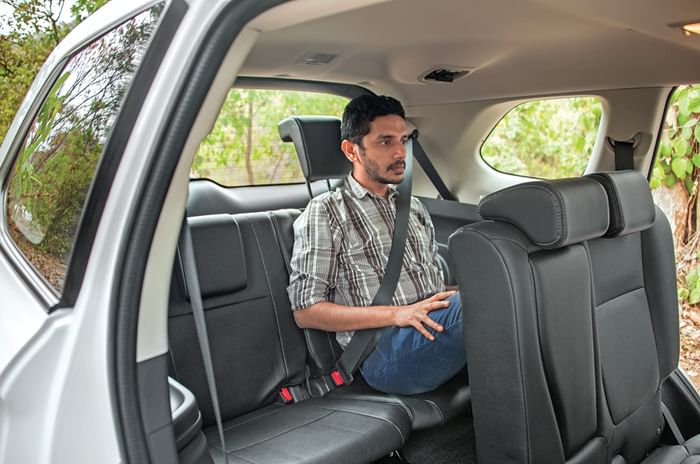
But when you’re being a bit subjective, the Outlander starts to lose out. The design is functional, but just far too boring, and with almost no brightwork to liven up the all-black colour scheme, the atmosphere in here is dark. Similarly, the quality isn’t bad, but there’s just nothing to make you go ‘wow’, and that’s not what you want at this price range. It feels robust and long-lasting, but not special.
And then there are a few key omissions that, for a car launched in 2018, just can’t be overlooked. There’s a touchscreen unit, but at 6.1 inches, it’s quite small, and the clunky interface feels a bit like an aftermarket unit. Apple CarPlay? Android Auto? Satellite navigation? You won’t find those here. The other missing feature is purely functional, but in today’s 45degC heat, we are certainly feeling the absence – there are no rear AC vents in this seven-seat SUV!
Is old-school cool?
On the face of things, the Outlander isn’t a car that will get you running to a showroom. The face looks bold, but the rest of the car doesn’t stand out too much. It’s also not got the most lavish of cabins and it’s missing some key equipment. So, whichever way you look at it, this is an SUV that could have done with a lot more flash.
The good ride and handling, however, are in keeping with Mitsubishi’s DNA, and this is a car that grows on you the more you drive it. So its fundamentals are strong, and with a price tag of Rs 31.54 lakh (ex-showroom, Mumbai), this just could be the solid and dependable SUV you are looking for. Still, if you find the Outlander a bit plain, we wouldn’t blame you for choosing one of the more modern alternatives.




















